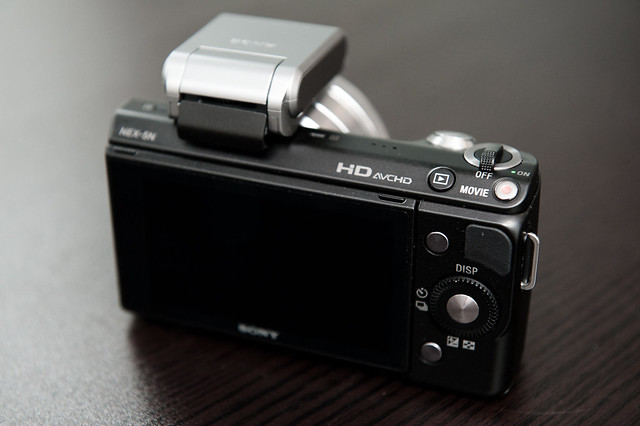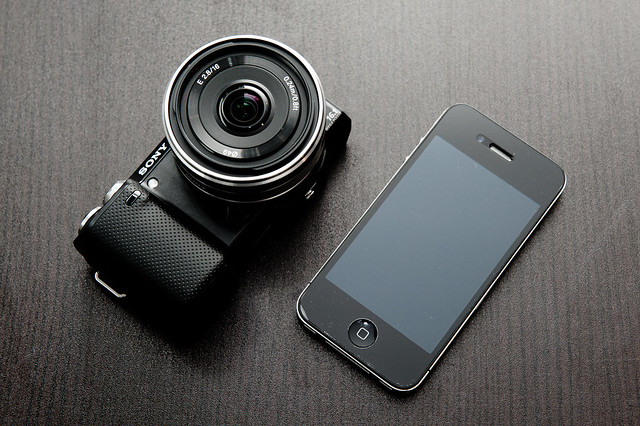If you like this post, help us share it
Does size matter to you? That’s the question you have to answer when you choose between mirrorless cameras and DSLRs (MILC vs DSLR). Mirrorless Interchangeable Lens Cameras are certainly maturing and the market has been overwhelmed by the different types of mirrorless cameras. Olympics, Panasonic came out with their EP and GF series (2008). Sony has the NEX (2010), Pentax has the Pentax Q (2011), Ricoh GXR from Ricoh (2009), Samsung has the NX (2010), Nikon later joined with their 1 system (2011), Leica with their M9 (2011), Fujifilm with their sleek X-Pro 1 (2012) and now with Canon completing the list with G1 X (2012) though it is not an interchangeable lens system. There are certainly a lot of mirrorless cameras out there to accommodate your different needs.
Should you choose something small and easy to travel with ? or should you choose something with a bit more performance instead? In terms of price, there is not much difference between mirrorless cameras and entry level DSLRs which makes your decision even harder. In fact some entry level DSLR cameras are actually cheaper than mirrorless cameras, for examples Olympus E-P3 single len kit is $899 (B&H) vs Nikon D3100 DSLR single lens kit is $596 (B&H). With less than $600, you can get started with a decent entry level DSLR.
Should size be a factor for you ?

Size difference between a NEX-5N with 18-55mm f/3.5-5.6 and Nikon D700 with 24-70mm f/2.8.

There is no definite answer to which camera system is better, it depends on your needs and both systems have their pros and cons. However, let’s share some thoughts.
Auto Focus System
There is no doubt that DSLR has a much better AF system. DSLRs typically uses phase detection AF which is far more superior than contrast detection AF used in mirrorless cameras. DSLR’s AF is much more responsive and reliable. You can expect AF will still work under –1EV, for pro DSLR like the D800 and D4, AF is achievable even in –2 EV condition. Numerous of times, I had difficulties finding focus in low light situation using my NEX-5N and I had to revert to MF. Specifically, contrast detection doesn’t work too well focusing on the face under low light condition. This is particularly an issue when the subject is in a distance. Features on the face is not “contrasty” enough to achieve a focus.
Entry DSLR such as Nikon D3100 and D5100 has 11 AF points with 1 being a cross type. While mirrorless camera such as the NEX-5N has 25 AF points, from experience AF on DSLR is much more reliable even with the very elementary Nikon D3000. Having said that, the NEX-5N and many other mirrorless cameras has a DMF mode where once pre focused, you can fine tune the focus by rotating the focus ring. The image zooms to1:1 automatically once you started turning the focus ring. This is very useful.
Nikon stated that the Nikon 1 system is equipped with the fastest autofocus of all the cameras up to date, including the D3s. It has a ‘Hybrid’ autofocus system that employs both Phase and Contrast Detection focus methods (135 points with contrast-detection AF and 73 with phase-detection AF). I have not yet tested it out, but presumably it is very good with that bold statement.
- Go with DSLR or Nikon J1/V1 if you want something with a fast and reliable AF.
- Mirrorless camera AF can be quite slow, but is adequate for casual shoot.
ISO Performance
In general, bigger sensor means better ISO performance. but this is also subject to the number of MP and image processor used in the camera. Different mirrorless camera system uses different sensor size. Olympus and Panasonic are equipped with m4/3 sensors (2x crop factor), Sony uses APS-C sensor in their mirrorless cameras (1.5x crop factor), Nikon’s J1 and V1 have a smaller sensor (2.7x crop factor) and Canon’s G1X has a 1.5” sensor.
As Sony NEXs have a APS-C size sensor which is the same size to most entry level DSLRs, you can expect they have a similar ISO performance. Comparatively, Nikon J1 and V1 will have the worst performance. DxOMark scored Sony NEX-5N similarly to the Nikon D700.
When I was shooting with the Nikon D3000, I was only comfortable using up to ISO 800. For the latest entry level DSLR like the D5100, it is acceptable for up to 1600, gaining a stop over the D3000. With the Sony NEX-5N, I am quite happy using it up to ISO 1600. More on NEX-5N’s ISO performance here. For smaller sensor cameras like the m4/3s, you are hitting its limit at ISO 800. Bare in mine, this is very subjective and only reflects to my personal choice.
Here is a caparison from DxOMark between the NEX-5N with other entry level DSLRs.

Operation and Control
As soon as you start shooting with a DSLR, you will notice DSLR feels much more responsive. It has a very fast start up time, you can almost shoot instantly after you turned it on. On specs, the start up time for entry level DSLR is about 0.5 sec (0.4sec for pro body). Comparatively, Sony NEX=5N has a much slower start up time, you have to wait for 2 secs before you can shoot.
Shutter lag also play a big role in terms of responsiveness. Sony NEX-5N has reduced shutter lag by introducing electronic first curtain. This reduces the shutter lag from originally 0.44s (NEX-5) to 0.27s (NEX-5N). This is similar to the shutter lag on entry level DSLR. But in terms the menu and general responsiveness of the camera, mirrorless cameras are on par with DSLRs.
Mirrorless cameras have a more compact body and therefore inevitably have less buttons. This means a lot of the camera settings are done through the camera menu. Buttons and camera settings are much more fiddly on mirrorless cameras. Compariing the NEX-5N and D3000, I find the D3000 is much easier to operate and much easier to change the camera settings. This is one of the trade-offs for fitting everything in a compact body.
An important aspect to the whole operation and control is the dials. It makes sense that changing aperture and shutter speed should be through the dials. However, just like DSLR, entry level mirrorless cameras and DSLRs only come with one dial, unless you opted for the higher end mirrorless cameras like NEX-7 and X-PRO 1, then you have the luxury of having two or more dedicated dials for aperture, shutter speed, ISO and exposure compensation.
Very few buttons on the back of NEX-5N
Ergonomic Design
Mirrorless cameras are designed to be small and they are all very travel friendly. While they are not pocket size like digital compact cameras, they can be fitted easily in any bag or jacket pocket. In particular, Sony’s NEX-5N is remarkably small for a camera equipped with APS-C sized sensor. You have to appreciate the compactness of mirrorless camera system but still give you a decent sensor nad interchangeable lens option.
When fitted with a pancake lens, you have a very compact and capable camera that is not much bigger than the iPhone 4/4. The build quality of mirrorless cameras are pretty good, the lenses are usually much smaller and lighter than DSLR mount lenses.
Personally, DSLR feels just right in the hands. The grip fits in the palm nicely. Mirrorless cameras need some adjusting thou, its grip on the NEX-5N is nice but much smaller and feels a bit fiddly.
The Ultimate Question
While DSLR is certainly a better camera but the ultimate question comes down to “ how much do you want to carry” ?
Do you want to carry this much?

or this much ?

Where can I find the equipment seen on this site?
If you find this site useful and planning to purchase any of the equipment seen on this site, please show your support by purchasing your photo equipment at B&H Photo Video, or through any of the affiliate links seen on this site.



